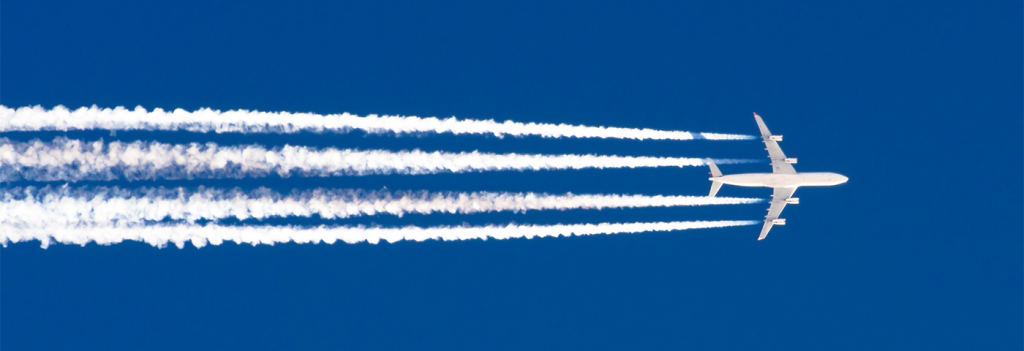Globally aviation emits around 2% of CO2 and other greenhouse gases, bring its total emissions to around 5% of the global total; if aviation were a country it world rank alongside Germany. Its emissions are forecast to keep on growing. The Paris agreement called for all sectors to reduce emissions, not to pay others to do so. Carbon credits are purchased only so that the company can go on polluting.
Sustainable Aviation, the UK industry coalition of airlines, airports and manufacturers reported in December that the airline members – British Airways, easyJet, Monarch, Thomas Cook, Thomson Airways and Virgin Atlantic – had managed to decouple growth in passenger numbers from emissions and noise. Sustainable Aviation back in December reported that emissions increased by less than half a percent between 2014 and 2016 despite a 9% increase in the number of passengers flown. Fuel efficiency reached 0.347 litres/RTK in 2016, a 2% improvement over the two years and 13% better than 2005.
The International Civil Aviation Organization (ICAO), a UN specialised agency with 192 Member States, has developed a market-based mechanism to address carbon emissions from aviation. ICAO reported last month that 73 States, representing 87.7% of international aviation activity, intend to participate in the global scheme from its outset. ICAO has focussed on three market-based measures: voluntary measures, emission-related levies and emissions trading.
The average level of CO2 emissions from international aviation covered by the scheme between 2019 and 2020 will represent the baseline for carbon-neutral growth from 2020. The Carbon Offsetting and Reduction Scheme for International Aviation (CORSIA) will address any annual increase in total CO2 emissions from international civil aviation (i.e. civil aviation flights that depart in one country and arrive in a different country) above the 2020 levels. CORSIA is entirely voluntary for states throughout the pilot phase 2021 to 2023 and the first phase 2024 to 2026.
CORSIA is designed “to address any annual increase in total CO2 emissions from international civil aviation (i.e. civil aviation flights that depart in one country and arrive in a different country) above the 2020 levels, taking into account special circumstances and respective capabilities.” [Emphasis added]
Only in the second phase (from 2027 through 2035) would it apply to all States that have an individual share of international aviation activities in RTKs in 2018 above 0.5 percent of total RTKs or whose cumulative share in the list of States from the highest to the lowest amount of RTKs (Revenue tonne-kilometres) reaches 90 percent of total RTKs, except Least Developed Countries (LDCs), Small Island Developing States (SIDS) and Landlocked Developing Countries (LLDCs) unless they volunteer to participate in this phase. This scheme is not designed to attract public attention or to be easily comprehended.
Carbon neutral growth sounds good, until the details are considered:
- CORSIA is voluntary for member states until 2027, even then LDCs, SIDS and LLDCs will be excluded unless they volunteer.
- The baseline is the average of global emissions in 2019 and 2020. “In any year from 2021 when international aviation CO2 emissions covered by the scheme exceed the average baseline emissions of 2019 and 2020, this difference represents the sector’s offsetting requirements for that year.” CORSIA Business as usual until 2021. There is a perverse incentive to go on polluting to establish an easier baseline.
- The scheme only relates to international flights – flights between states. .. “a route will be covered by the scheme if both States connecting the route are participating in the scheme; similarly, a route will not be covered by the scheme if one or both of States connecting the route are not participating in the scheme.” So flights to or from an LDC, SID or LLDC will most likely not be included.
- The scheme takes into account “special circumstances and respective capabilities.”
- Until 2020 ICAO requires no reductions in emissions from international aviation, from 2020 onwards, emissions will continue to grow rapidly, but a significant proportion of them will be offset. Aviation will continue to pollute. Offsetting does nothing to reduce emissions and has much in common with purchase of a medieval pardon, an indulgence. Offsets will vary in quality and be difficult to police.
International aviation escaped both the Kyoto and Paris agreements, CORSIA is a poor effort. Only in 2027 will most states be required to impose the scheme on most international flights. In October 2016, The Economist estimated that the airlines in the scheme could expect to spend up to 1.4% of their international revenues on the CORSIA scheme by 2035. That is very little to pay for a license to pollute.
Business as usual. Is CORSIA acceptable?
